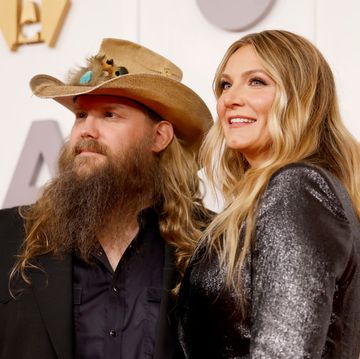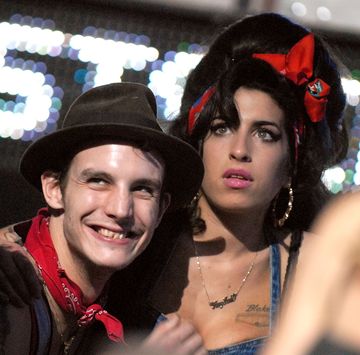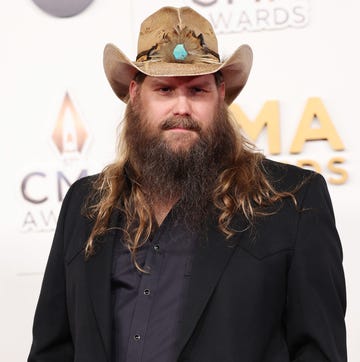The Osmonds were never destined to be your run-of-the-mill, post-World War II American family.
The first two children born to George and Olive Osmond of Ogden, Utah, named Virl and Tom, were both diagnosed as severely hearing impaired. Ignoring suggestions to have them institutionalized, Olive took a hands-on approach to helping them read, write, speak ... and tap dance.
The next four children – Alan, Wayne, Merrill and Jay – learned to harmonize together while the youngest was still crawling around in diapers. They made their public debut at a 1957 church service when Alan was 8 and Jay was 2, while Olive was pregnant with a seventh boy. The newest addition arrived in December of that year. His name? Donny.
The Osmond children were raised in a disciplined household
As Donny recalled in his 1999 autobiography, Life is Just What You Make It: My Story so Far, the Osmond household was marked by rules and routines. An ex-U.S. Army sergeant, George had the boys "sound off" to confirm they had received their meals and instructed Alan to wake up the charges every day by playing reveille on his bugle. Rules of speech mandated a "Yes, sir" and "Thank you, sir," while talking back could lead to a decisive spanking.
The guiding force was a strong adherence to the teachings of the Church of Jesus Christ of Latter-day Saints, which emphasizes the eternal ties that bond families together and the ephemeral nature of material possessions.
Amid the strict order, Donny remembered his early Utah years as being filled with laughter and love. He enjoyed frolicking on the family's rural plot of land, with its apple, peach and cherry trees and an old cow milling about. He also relished the opportunity to partake in weekly family night activities, in which the kids were given the opportunity to sing and perform.
In October 1959, another addition to the family came with the birth of Marie. Along with giving Donny a younger sister to play with, it gave an overjoyed Olive her first girl after a seemingly never-ending stream of boys.
The Osmonds were introduced to audiences on 'The Andy Williams Show'
By the early '60s, the Osmonds were looking to introduce their musical sons to the world outside Ogden. A trip to Disneyland resulted in a meeting with the theme park's entertainment director, who had the young barbershop quartet perform on the televised Disneyland After Dark. That, in turn, led to an even bigger booking, on The Andy Williams Show, and a five-year contract to serve as regulars on the musical variety program.
The newfound success prompted the family to leave the familiar pastures of Ogden and relocate to the Los Angeles area in 1963, though, in Donny's view, little changed with the shift to a new home base. There were still plenty of backyard pleasures to enjoy, and now, with Marie coming of age, they could create their own little stage shows together, modeled after the performances of their brothers on TV.
Of course, the musical DNA found its way down the line, and in late 1963, a few days before turning 6, Donny taped his debut performance for The Andy Williams Show. In February 1964, 4-year-old Marie made her introduction on the program as well (as did the final Osmond child, Jimmy, in 1967).
Their parents continued to funnel their not-yet abundant resources into the business, finding a cost-saving method of having each child take lessons in an instrument, after which they would pass on their know-how to the others. For Marie, who gritted her way through marimba lessons, this seemed like a perfectly normal development.
"I never knew a day of my childhood life where music wasn't being played, practiced, written or sung," she wrote in her 2009 autobiography, Might as Well Laugh About It Now. "Until I was about five years old, I had mistakenly concluded that every family must do the same thing we did: perform."
Life on the road became a constant for the family
Although Donny became a regular member of the group and Marie did not, life nonetheless changed for everyone as the Osmond Brothers became bona fide celebrities. The family began touring the country for performances at fairs and festivals, their bookings eventually taking them to overseas locales in England, Sweden and Japan.
For the children, traveling the highways in their Airstream trailer carried a sense of adventure. Marie remembered how they would practice their songs and scribble out their schoolwork under the watchful eye of Olive, after which Marie, Donny and Jimmy would crawl onto the overhead luggage racks. She also helped her mother keep track of gate receipts, taking pride in being able to locate a missing ticket from a huge bundle.
With the end of the initial run of The Andy Williams Show in 1967, the Osmonds found themselves navigating new waters as they tried to transition from their barbershop roots to legitimate pop-rockers. They managed to land a new regular gig on The Jerry Lewis Show and even found their niche in Las Vegas, retaining their strong family-oriented faith amid the temptations, though recording success proved elusive.
Success brought financial gains and division for the performing children
Everything changed in early 1971, with the Osmonds' first hit single, "One Bad Apple," claiming the top spot on the Billboard Hot 100. Donny also enjoyed his first solo hit that summer, with "Sweet and Innocent," and Osmondmania was up and running.
The star turn brought new financial benefits that allowed the family to purchase an apartment building in the Westwood section of Los Angeles, as well as multiple homes back in Utah. In one of them, Donny put together his famed "007 room," using his electronics wizardry to wire a bed that would rise and lower from the ceiling.
By 1973, there were already divisions appearing in the family act. The brothers, who had shown an affinity toward harder rock, released an ambitious, spiritually themed album titled The Plan, which flatlined on the charts. Meanwhile, Donny's solo career was going as strong as ever by way of softer singles like "Puppy Love." That fall, Marie also proved her solo capabilities when her cover of "Paper Roses" soared to No. 1 on the country and mainstream charts.
Donny and Marie delivered their variety show before seeking separate paths
With most of the Osmond children married and tiring of rehearsing and touring by the mid-1970s, attention turned to the younger hitmakers of the family. They accepted an offer to headline their own variety program and, with the launch of Donny & Marie in January 1976, 18-year-old Donny and 16-year-old Marie became the youngest TV hosts to date.
As with virtually everything before, the creation of the show was a family affair. The older brothers oversaw the musical numbers, while Jimmy regularly joined the skits and even the parents occasionally surfaced on screen. With their all-in-this-together attitude, they moved production from L.A. to the sparkling new 104,000 square-foot George V. Osmond Studios in Orem, Utah, in fall 1977.
But by this point, the pressures of a constant spotlight were getting to the two hosts: Donny was experiencing the first of what would become a recurring problem of panic attacks, and Marie, feeling inadequate next to the A-list starlets who appeared on the show, was starving herself.
Donny had also found his first serious girlfriend, Debbie Glenn, and, after a decade-plus in the service of a show-business family, he was ready to pursue life on his own terms. He married Debbie in May 1978, and with his first son on the way, he let Donny & Marie run out the string in 1979.
Marie soon forged her own break by moving to New York City in the early 1980s. Still, the ties that bound this family remained in line with their spiritual beliefs, and they continued to record and perform together on and off, seemingly never straying too far from one another, as they continued through the peaks and valleys of their personal and professional lives.














